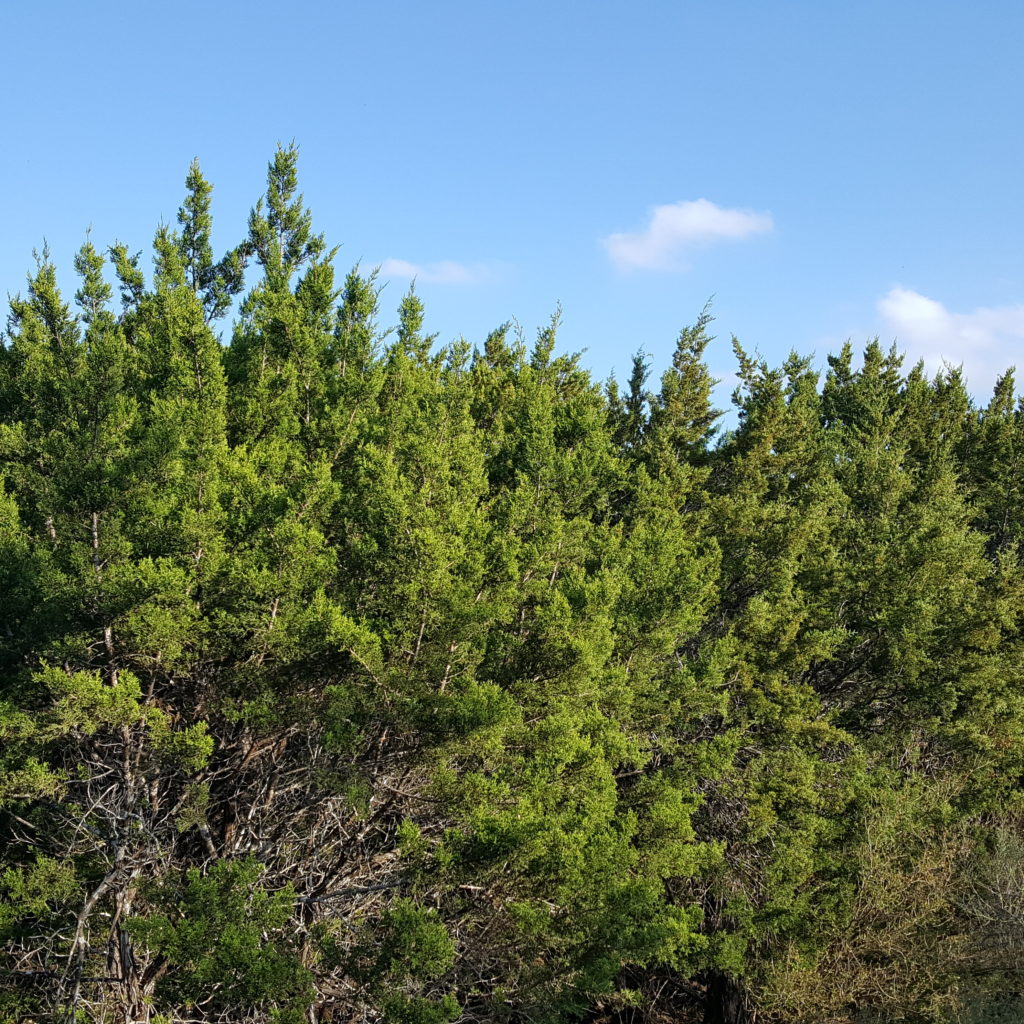The Great War is about to begin. No, don’t worry that we are talking about armaments or military personnel. We are talking about something much more insidious and toxic, potentially much more devastating to one’s everyday life. We are talking MOUNTAIN CEDAR FEVER. It’s the scourge of Central Texas. A plague that affects the young and the old, the just and the unjust. It involves a tiny beast that lodges in your nose and eyes and chest, making the mid-winter weather threaten to devour your sense of peace on earth and good will toward men. It may begin subtly or it could hit with a vengeance. And once it begins, misery persists for weeks or months. You may notice sneezing and congestion, itchy eyes, throat irritation, chest congestion, fatigue, and you may feel feverish (although your thermometer tells you otherwise). And it may make you think twice about staying in Central Texas for the mild winter weather.
“Cedar Fever” refers to the seasonal allergy symptoms that are caused by the mountain cedar tree, which is actually a juniper tree ( Juniperus ashei ). The cedar tree is a medium-sized, undistinguished tree with sinewy limbs covered with shaggy bark that vaguely resembles orangutan fur. The most intense population of cedar stretches from the Red River to the Rio Grande Valley, right through Central Texas, with the majority of trees being in the Texas Hill Country. The culprit in causing cedar allergy symptoms is actually the pollen from the male cedar trees ( Yes, ladies, you can blame the men! ), and the cedar pollen is produced in massive quantities beginning around mid-December and extending until late February. The pollen is light and airborne, traveling for miles from the source trees ( So, no, you are not safe in downtown San Antonio! ). The requirements for active pollination are healthy trees ( which we have, thanks to the rains this year ) and a hard freeze ( which we have already had ). Once pollination begins over the next few weeks, the severity of the season will depend on the weather. Dry, windy conditions favor spread of the pollen, while rainy weather every few days will help clear the air.
Cedar allergy doesn’t always strike everyone, but estimates tell us that 20-30% of the population may be sensitized and therefore at risk for symptoms. Initially, symptoms may feel like the common cold, but will last much longer and may be much worse. Common sense should apply if you are affected, such as limiting outdoor exposure and using over-the-counter allergy medications. If these efforts prove to be insufficient, then we can offer more aggressive treatment in the clinic. And if this is a recurrent problem for you each winter, then we can offer specific testing and cedar immunizations, either with allergy shots or allergy drops.
So, if you are one of the many Central Texans who have become allergic to mountain cedar, prepare for the battle to some. And let the physicians and nurses at Certified Allergy and Asthma of San Antonio arm you with measures to win the Great Cedar War of 2018.
